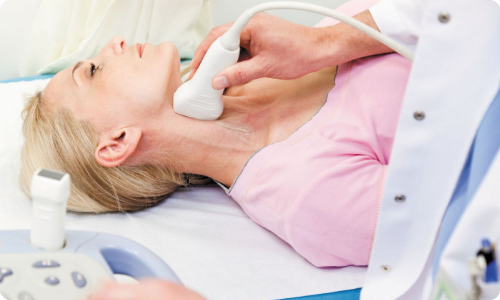
What is carotid artery disease?
Carotid artery disease is a condition affecting the major blood vessel that supplies oxygen-rich blood to your head and brain.
Like other vascular diseases, like atherosclerosis and peripheral arterial disease, carotid artery disease develops when sticky fat deposits called plaque start to collect in your arteries. These can lead to blockages that cause a stroke, a potentially life-threatening condition that strikes when your brain isn’t receiving oxygen because of a lack of blood.
Stroke is the leading cause of death in the United States, as well as the most common cause of permanent disability.
Schedule AppointmentCommonly asked questions about carotid artery disease:
Carotid artery disease doesn’t typically cause any symptoms. So it’s possible to have the condition and not know it until you have a stroke or a transient ischemic attack (TIA).
A TIA is sometimes called a mini-stroke because it causes a temporary problem with blood flow to the brain that mimics the symptoms of a stroke but to a lesser degree. Having a TIA is a clear warning sign that you have a high risk of stroke.
Symptoms of stroke and TIA include a sudden loss of feeling or weakness in your face and arm on one side of your body. You might have trouble talking, or not understand what someone’s saying to you.
Your vision might dim, and you could feel dizzy and off-balance. You might also have a severe headache that arrives suddenly without reason.
If you or someone you’re with shows signs of a stroke or TIA, get medical help right away.
The team at Tinsley Surgical starts the diagnostic process by finding out about any current health problems or symptoms, carrying out a comprehensive physical exam, and reviewing your medical history. They listen for a swooshing noise in the carotid artery, which is typical in carotid artery disease, and check your strength, how well you can talk, and your memory.
You also need to undergo diagnostic testing, which might include:
- Vascular ultrasound
- CT scan
- MRI
- CT or MR angiography
These tests allow the Tinsley Surgical team to assess how well your blood flows through the carotid artery. They measure the pressure in the artery and can detect if there are any signs your brain already suffered a lack of oxygen. They carry out ultrasound in-house for your convenience.
Making healthy lifestyle changes and taking medications helps to slow the development of the plaque that causes the narrowing of your carotid artery.
Lifestyle changes include:
- Quitting smoking
- Losing weight
- Eating a healthy diet
- Reducing salt intake
- Exercising regularly
If the blockage is severe or you’ve already experienced a TIA, the Tinsley Surgical team might recommend surgery.
Carotid endarterectomy is the most common approach to severe carotid artery disease. During this procedure, your provider makes an incision in your neck and surgically removes the plaque from inside your carotid artery.
If the blockage in your carotid artery is in a place that’s hard to reach, or you have health issues that can lead to complications related to general anesthesia, another option is carotid angioplasty and stenting.
In this procedure, the medical team at Tinsley Surgical gives you a local anesthetic, then passes a tiny balloon on the end of a tube called a catheter into the vein through a small incision. When the balloon is in the right place, your provider inflates it to open up the artery. Then they insert a stent, which is a small coil of wire mesh, into the artery where it stays to hold the artery open.
